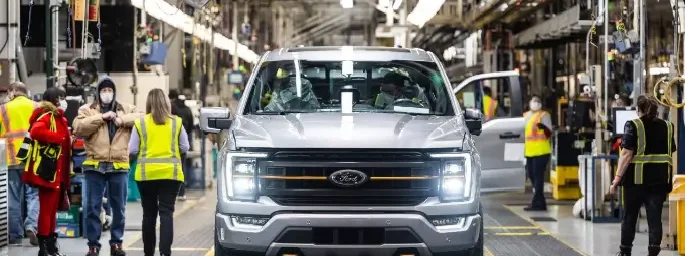There are a number of factors that affect your car insurance rates, including your coverage choices, deductible, driving record, age, vehicle make and model, driving frequency, credit score, neighborhood and insurance company. While this might sound complicated, checking for discounts and comparing rates from multiple car insurance companies can help lower your premium.
Why is car insurance so expensive?
Car insurance rates depend on many factors, from your age and driving record to the type of car you drive. Even factors you cannot fully control — like your neighborhood and inflation — can impact your rates.
#1 You have high coverage levels
This is a “good” reason for your car insurance to be expensive, as it means you have more financial protection in case of an accident. The more coverage you have, the lower the chance that you’ll have to pay a lot of money out of pocket when a collision occurs.
If you have a full-coverage insurance policy (which includes liability, collision and comprehensive coverages), you will pay more than you would for minimum liability car insurance — but you’ll also have more financial protection.
Full-coverage policies with higher liability limits can be pricey, but shopping around can help you find the cheapest car insurance rates. Check out what the following list of insurance companies are quoting real Jerry customers for full-coverage policies:
|
Insurance Company
|
Avg Monthly Quote
|
|---|---|
| Metlife | $108 |
| Grange | $122 |
| Freedom | $202 |
| Aspire Advantage | $221 |
| Safeco | $248 |
| Bluefire | $249 |
| Mercury | $258 |
| Progressive | $266 |
| Anchor General | $274 |
| First Acceptance | $305 |
A minimum liability insurance policy is the cheapest you can buy. But while you might be paying less money for your monthly premium, you may find yourself financially vulnerable if you’re involved in an accident.
Each state has a different minimum liability insurance policy. Indiana’s, for instance, has limits of 25/50/25, or $25,000 of bodily injury liability per person, $50,000 of bodily injury liability per accident and $25,000 of property damage liability per accident.
It’s not hard to imagine quickly exceeding that $25,000 property damage liability for a major accident, especially if you hit a newer vehicle. All of the expenses following a car accident, including car repairs and medical expenses, quickly add up. If you don’t have enough coverage to pay for the other driver’s expenses, as well as your own, you could find yourself in a lot of debt.
That said, there’s a trade off, as raising your policy limits or purchasing additional coverage — like gap insurance, personal injury protection (PIP) and roadside assistance — will increase your premium.
#2 You have a low deductible
Your deductible, or the amount you agree to pay out of pocket before your car insurance company pays to cover a claim, also impacts your insurance rates. A higher deductible on your coverage will often give you lower rates, while a lower deductible may increase your monthly rates.
If you set a higher deductible, like $1,000, your car insurance company will lower your rates a bit because you’re taking on more of the cost if you file a claim.
#3 You have a poor driving record
Traffic violations tell car insurance providers that you’re a risky driver, and that tag comes with higher premiums.
Our experts analyzed thousands of car insurance policies quoted to real Jerry users to determine how various violations can impact your average monthly premium:
| Driving Violation | Increase in State Min. Coverage | Increase in Full Coverage Cost |
| No Violation | Baseline | Baseline |
| Careless Driving | 19% | 34% |
| Cell Phone | 43% | 80% |
| Driving on Sus. License | 9% | 23% |
| DUI | 2% | 16% |
| Failure to Obey Traffic Sign | 11% | 18% |
| Illegal Turn | 25% | 36% |
| Improper Passing | 2% | 31% |
| Reckless Driving | 195% | 187% |
| Speeding over 15 | 12% | 21% |
| Speeding under 15 | 36% | 1% |
| Suspension | 7% | 19% |
| Wrong Way/Wrong Lane | 40% | 74% |
#4 You don’t have much driving experience
Young or new drivers are statistically more likely to be involved in accidents than drivers with more experience, so they’re considered high-risk and pay more for insurance.
Car insurance rates tend to decrease once you reach 25 years old and then increase again once you reach your 70s.
Learn more: How to find cheap car insurance for new drivers
#5 You drive an expensive vehicle
Pricier cars are more expensive to insure because they will cost your insurer more to repair or replace after a claim. So if you own a luxury vehicle or sports car, you’ll pay higher insurance rates.
Classic cars tend to be an exception to this rule — they’re valuable but require specialized classic car coverage insurance that usually costs less.
New cars are generally more expensive to insure than older vehicles due to their high replacement or repair costs. Vehicles with up-to-date safety features that have done well on the Insurance Institute for Highway Safety’s safety ratings may have lower insurance premiums, but it’s also possible that the safety features cost a lot to repair and replace, leading to higher premiums.
#6 You drive a lot
The more you drive, the higher your risk — and the more you can expect to pay for coverage.
Every minute you spend on the road increases your chance of being involved in an accident or claimable incident, so your mileage plays a role in the price of your premium.
Alternatively, if you rarely drive, you might qualify for a low-mileage discount because you are less likely to file a claim.
Learn more: The best low-mileage car insurance companies
#7 You live in a high-risk neighborhood
Location is another big factor in your insurance rates. Living in an area deemed higher-risk by insurers will usually mean pricier insurance, and those rates can vary widely even within the same city.
Urban areas tend to have higher auto insurance rates, as do ZIP codes with higher vehicle theft rates. And while rural areas usually have cheaper rates, places that are prone to severe weather, like flooding or tornadoes, also tend to have higher auto insurance rates.
#8 You have a low credit score
There is a statistical correlation between low credit scores and insurance claims, so most auto insurance companies use something called a “credit-based insurance score” to set car insurance premiums. On average, drivers with good credit scores pay lower premiums than drivers with poor credit scores.
Keep in mind that some states, like California, Massachusetts, and Hawaii, ban the use of credit scores when setting auto insurance premiums.
#9 You have a policy with an expensive insurance company
Sometimes, it’s just about the company you’re with. Insurance companies use different methods to calculate their premiums, meaning that some might be more affordable for your vehicle and driver profile than others. Check out recent quotes Jerry customers have gotten:
|
Date of Policy
|
Insurance Company
|
City, State
|
Monthly Quote
|
|---|---|---|---|
| April 13, 2025 | Progressive | Houston, TX | $136 |
| April 13, 2025 | Bristol West | Glen Burnie, MD | $172 |
| April 13, 2025 | Bristol West | Winder, GA | $192 |
| April 13, 2025 | Embark General | Amherst, MA | $243 |
| April 13, 2025 | Root | Calera, OK | $71 |
| April 13, 2025 | Bristol West | Flushing, NY | $1,381 |
| April 13, 2025 | Progressive | Montgomery, TX | $191 |
| April 13, 2025 | Root | Phoenix, AZ | $237 |
| April 13, 2025 | Bristol West | Albany, NY | $255 |
| April 13, 2025 | The General | Wylie, TX | $255 |
It’s always a good idea to compare quotes from multiple companies every six months to make sure you’re getting a good deal. If you find that you’re paying too much for car insurance, switching companies may help you find the best rate.
#10 Inflation
Inflation impacts everything and has caused industry-wide insurance rate hikes over the past few years. Along with the prices for both new and used cars, the cost of parts and labor has also gone up — which impacts your premium since insurance companies have to pay out more for claims.
Learn more: Best insurance companies for most drivers
How to lower my car insurance
Here are a few things you can do to lower your premium.
Look for discounts
Car insurance discounts are a great way to reduce your premium. While many insurance companies automatically apply discounts to your policy, it never hurts to ask if you are eligible for further savings. Keep in mind that different insurers offer different discounts, and some may not be available with every company or in every state.
Here are some of the most popular discounts:
- Good driver or safe driver discount: Keep your record free of car accidents and claims for at least three years.
- Bundling discount: Buy two or more insurance policies with the same company (like homeowners and auto).
- Good student discount: If you have a younger driver on your plan, maintain a 3.0 average in full-time studies.
- Pay-in-full discount: Pay your premium annually instead of monthly.
- Multi-vehicle discount: Insure two or more vehicles with the same insurance company.
- Accident forgiveness: This is sometimes available as an add-on for purchase, but it might also be applied as an automatic discount. Accident forgiveness prevents a rate increase after your first accident.
Practice safe driving habits
Maintaining a good driving record is a great way to save money on car insurance. Not only does it keep you safe, but it also keeps your premiums low.
Avoid risky behaviors, such as speeding, distracted driving and driving under the influence. These habits will help you avoid pricey tickets and a bad record as a risky driver.
Look for a new insurance company
The best way to get lower rates on car insurance is by comparing quotes from multiple car insurance companies. If you see a better rate, simply make the switch to a new company.

Megan Lee is an editor, writer, and SEO expert who specializes in insurance, personal finance, travel, and healthcare. She has been published in U.S. News & World Report, USA Today and elsewhere, and has spoken at conferences like that of NAFSA: Association of International Educators. Megan has built and directed remote content teams and editorial strategies for several websites, including NerdWallet. When she`s not crafting her next piece of content, Megan adventures around her Midwest home base where she likes to drink cortados, attend theme parties, ride her bike and cook Asian food.

Everett Cook is an award-winning journalist and editor with more than 10 years of experience across a variety of industries. In editing for Jerry, Everett’s mission is to help readers have a better understanding of the costs of owning or leasing a car and to better understand their vehicle in terms of insurance and repairs. Prior to joining Jerry, Everett was an editor for Axios. His previous work has been featured in The New York Times, The Los Angeles Times, The San Francisco Chronicle, The Atlantic, Atlantic Re:think, The Boston Globe, USA Today, and others. He’s also been a freelance writer and editor with experience in SEO, audience building, and long-term content roadmaps. Everett is a proud graduate of the University of Michigan.









